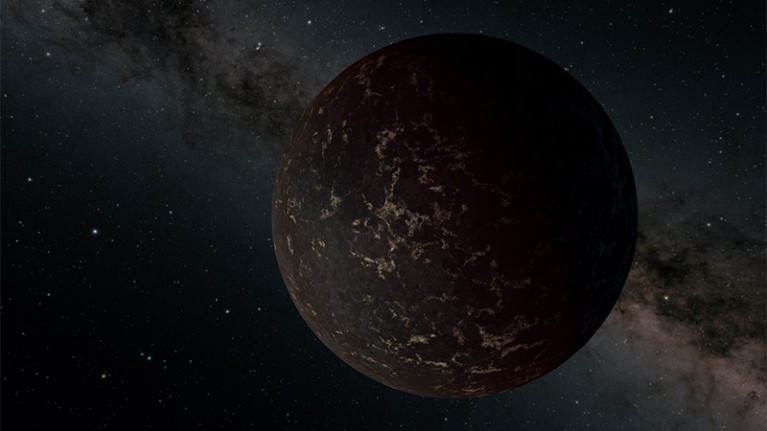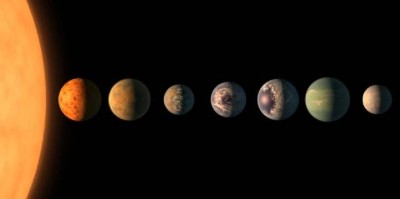[ad_1]

One side of the planet LHS 3844b (artist’s impression) is thought to be in perpetual daylight.Credit: NASA/JPL-Caltech/R. Hurt (IPAC)
Imagine if it were always night-time in the Western Hemisphere and always daytime in the Eastern Hemisphere, and the only way for Londoners to see the Sun was to fly to somewhere like Tokyo.
In a study published today in The Astrophysical Journal, scientists provide the most compelling evidence to date that a planet has this feature1, called tidal synchronization or 1:1 tidal locking. Astronomers think that many exoplanets are similarly ‘stuck’ — including most of the candidates with potential to sustain life.
“This thing that has been theoretical now feels real. This is actually what these planets look like,” says Nicolas Cowan, an astronomer at McGill University in Montreal, Canada, and a co-author of the study.
Two sides of the story
When a planet orbits very close to its star, its near side experiences a much stronger pull than its far side does. Over time, the imbalance, called a tidal force, is thought to slow the planet’s rotation until it is in perfect synchrony with its orbit. This means that the time taken for the planet to rotate once on its axis is the same as that needed for it to travel once around its star. The Moon is thought to have undergone this process, which explains why it has a ‘far side’ that never faces Earth.
Many exoplanets are thought to be 1:1 tidally locked on account of their close proximity to their host star, but that status is difficult to prove. Measuring an exoplanet’s orbit is straightforward; pinning down its rotation is much harder, especially if the planet has an atmosphere that obscures its spinning surface from view.
JWST gets best view yet of planet in hotly pursued star system
The scientists turned to a particular exoplanet that is close to its star to finally prove the tidal locking hypothesis. In 2019, researchers using the Spitzer Space Telescope measured the intensity of light coming off this planet2, called super-Earth LHS 3844b. Cowan and his co-authors realized that these measurements could tell them the temperature of the planet’s Earth-facing surface, because the planet probably has no atmosphere.
Planets that are not tidally synchronized heat up as a result of the conflict between their rotation and the massive tidal force exerted by their star. The team found the surface of LHS 3844b to be relatively cool — as would be expected for a tidally synchronized planet.
Compelling case
“This is the most compelling evidence one could possibly gather with currently existing information or instrumentation,” says Emily Rauscher, a theoretical astrophysicist at the University of Michigan in Ann Arbor.
Astronomer Emily Whittaker at the University of California, Los Angeles, notes that the paper assumes LHS 3844b has no atmosphere, but that a 2022 study which they co-authored left room for a thin, Earth-like atmosphere3. They say this could complicate the new paper’s argument, but agree that the evidence the team has laid out does point to tidal synchronization.
More evidence is expected soon. “James Webb is great for this,” says Cowan. The James Webb Space Telescope (JWST) will allow astronomers to study the rotation of exoplanets orbiting slightly further from their stars than LHS 3844b does. Astronomers now think that such planets, which can sustain an atmosphere and mild temperatures, constitute most of the Milky Way’s habitable real estate. If the JWST finds them to be tidally synchronized like LHS 3844b, Cowan says, then “probably a good fraction of planets, certainly most habitable planets, are tidally locked”.
As for in what sense such planets could be habitable, Cowan can’t currently speculate. These worlds “don’t have tides, or seasons or day–night cycles”, he says. “Could you get the same kind of diversity and complexity of life evolving? I have no idea.”
[ad_2]
Source Article Link


